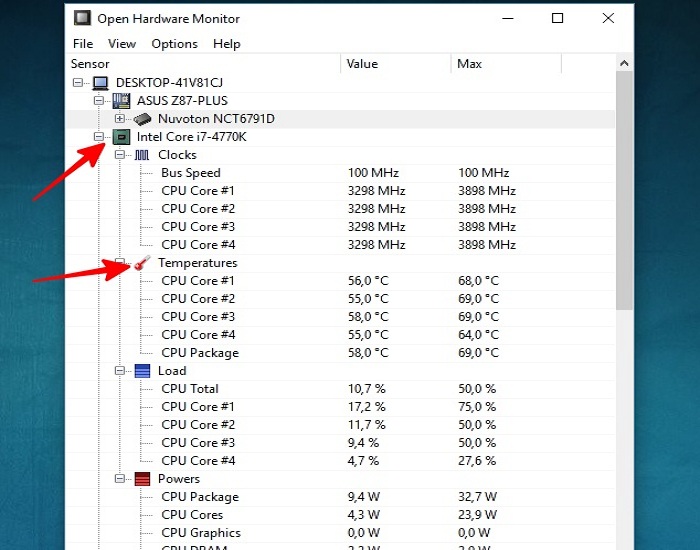
WINDOWS MEMORY MONITOR WINDOWS
To remove the plugin, ensure any service monitors using it have been deleted, then, in an administrative command prompt, from the uptime\scripts directory, run erdcdeleter -n "Monitor Windows Memory"Īlso, I made a batch file to do that for you, /./remove_Monitor_Windows_Memory. The plugin should now be added into uptime and available in the add service monitor dialogue, under "Operating System Monitors" as Monitor Windows Memory.Navigate to uptime\scripts and run erdcloader.exe -x "c:\program files\uptime software\uptime\xml\Monitor-Windows-Memory.xml".Next, move Monitor-Windows-Memory.xml into the uptime\xml folder.This just copies the stuff needed for the plugin into the proper spots.
WINDOWS MEMORY MONITOR ZIP
Download the zip and unpack into the uptime folder ie: c:\program files\uptime software\uptime it will ask if you want to overwrite the plugins and scripts folders, just say yes.Standb圜acheNormalPriorityBytes 5149515776 LongTermAverageStandb圜acheLifetimes 14400 Here's an example pulled from one of my lab servers. PROCESS_MEMORY_COUNTERS_EX.Get crazy and monitor every memory metric Windows has to offer. Thread Count (Process() for the specified image) For the System process, Page File Bytes is always 0. VM Size for all processes except the System process. It can monitor the usage of CPU, Memory, Disk Drives and Network Adapters and notify you when a certain resource exceeds a certain value. For the System process, Page File Bytes is always 0. System Monitor is designed to monitor and manage Microsoft Windows computers on a network. PagefileUsageĬommit Size for all processes except the System process. Task Manager Processes tab for Windows Server 2003 and Windows XP Task Manager Processes tab for Windows Server 2008 and Windows Vista The following table associates process object performance counters with the data returned by the memory performance functions in the MEMORYSTATUSEX, PERFORMANCE_INFORMATION, and PROCESS_MEMORY_COUNTERS_EX structures, and with the corresponding information displayed by Task Manager. Windows Server 2003 and Windows XP: Except for Cache Bytes, these performance counters are not supported.
WINDOWS MEMORY MONITOR CODE
Windows Server 2003 and Windows XP: This performance counter is not supported.Ĭache Bytes + Sharable pages on the standby and modified listsĬache Bytes + Modified Page List Bytes + Standby Cache Reserve Bytes + Standby Cache Normal Priority Bytes + Standby Cache Code Bytes ullTotalPageFile and PERFORMANCE_INFORMATION. ullTotalPhys and PERFORMANCE_INFORMATION. Subtract usage value shown in Memory graph from Physical Memory (MB): Total ullAvailPhys and PERFORMANCE_INFORMATION.

Task Manager Performance tab for Windows Server 2003 and Windows XP Task Manager Performance tab for Windows Server 2008 and Windows Vista Memory object counter (unless otherwise noted) The following table associates memory object performance counters with the data returned by the memory performance functions in the MEMORYSTATUSEX, PERFORMANCE_INFORMATION, and PROCESS_MEMORY_COUNTERS_EX structures, and with the corresponding information displayed by Task Manager. This topic associates performance counters with the data returned by memory performance functions and the Windows Task Manager: Applications such as the Windows Task Manager, the Reliability and Performance Monitor, and the Process Explorer tool use performance counters to display memory information for the system and for individual processes. Memory performance information is available from the memory manager through the system performance counters and through functions such as GetPerformanceInfo, GetProcessMemoryInfo, and GlobalMemoryStatusEx.


 0 kommentar(er)
0 kommentar(er)
